Coronavirus: How did your lockdown container garden grow?
- Published
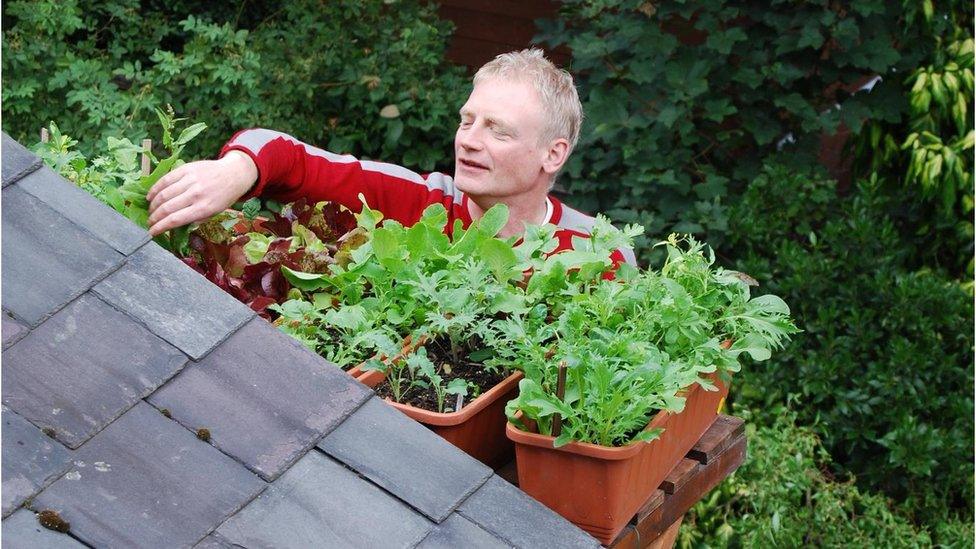
Mark Ridsdill Smith of Vertical Veg offers advice on boosting next year's crop
Vegetable-growing was big news during the first lockdown, with people inspired to get green-fingered in the tiniest of spaces but did they produce bumper crops or snacks for snails?
"With cooking, if it goes wrong you can try again the next night," says Newcastle based Mark Ridsdill Smith who runs the container gardening forum, Vertical Veg.
But with growing "you have to wait a whole year before you can go again".
Third-floor snails
In June, Sheila Brand had big ambitions for her third-floor balcony.
She had already picked raspberries, radishes and courgettes and was growing tomatoes, aubergines, herbs and even pumpkins which she hoped to harvest in October.
But then the snails arrived. "They ate everything. There was nothing left out of all the pumpkins I had sown and grown," she said.
She was heartbroken but will try again in the spring, although she's not sure how to ward off another "huge invasion".
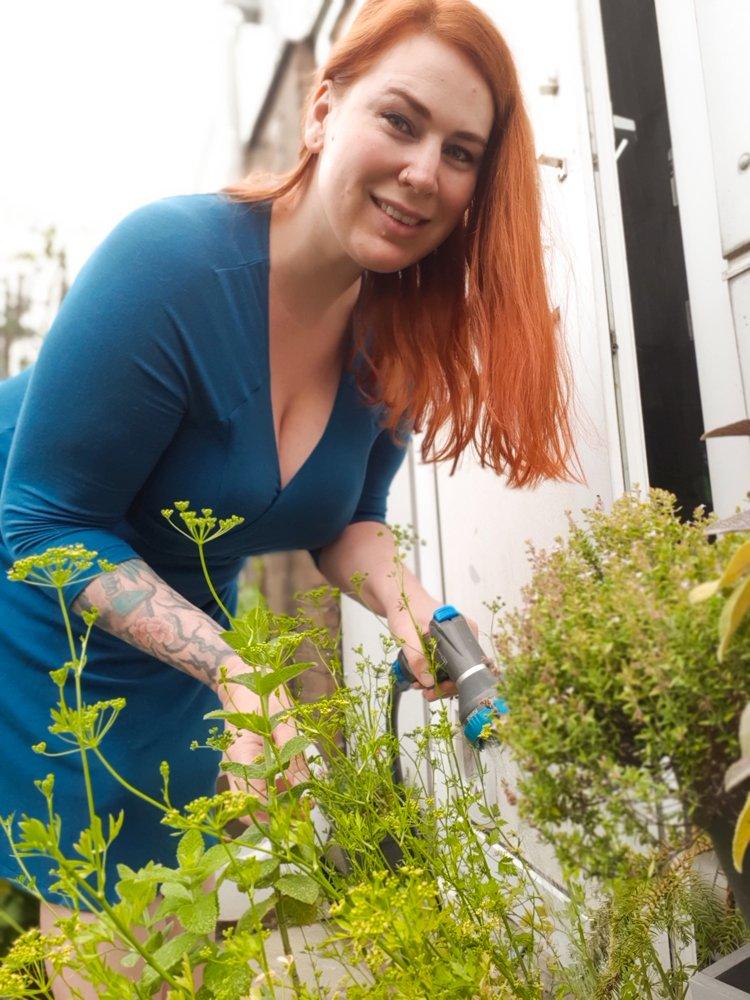
Sheila is determined to try again in the spring
"Right now I'm not growing much at all, just the standard herbs just outside my door for easy access while I'm cooking...
"My balcony looks very sad," she says.
Mark's advice: There are loads of anti-snail products, but really the best way is to go out at night with a torch and spend five minutes picking them off. Alternatively, look under pots or in other shady places and remove them in daylight.
The tomato 'forest'
For real-ale enthusiast Colin Coyne it began when his sister gave him six pots containing tiny tomato seedlings.
His second floor flat has no outside space so they sat on his living room window sill, inside the glass, in perfect greenhouse conditions.
Colin, who chairs the north London branch of the Campaign for Real Ale, made sure they were well watered.

Colin is chairman of the Campaign for Real Ale's north London branch
By July, the tomato plants were nearly 2m high. At night, they pushed out the curtains, by day they blocked out the light. He propped them up, at first on canes and later on strings attached to the curtain pole.
"They grew and they grew and they grew... When you're dealing with a forest, eventually I had to cut them back," he says.
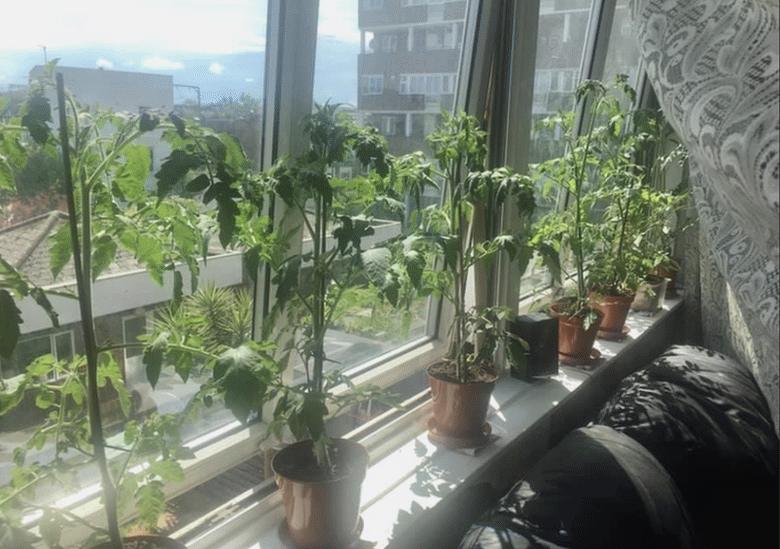
Colin's tomatoes before they took over
Despite an influx of aphids all the plants produced fruit and Colin ate a lot of tomato salad.
"It's encouraged me to try again, I've certainly got the bug," he said, although next year he plans to stick to smaller plants like basil, thyme or sage.
He's also saved seeds from a chilli plant which was his other crop, although he's not convinced by the flavour: "It nearly blew my head off," he says.
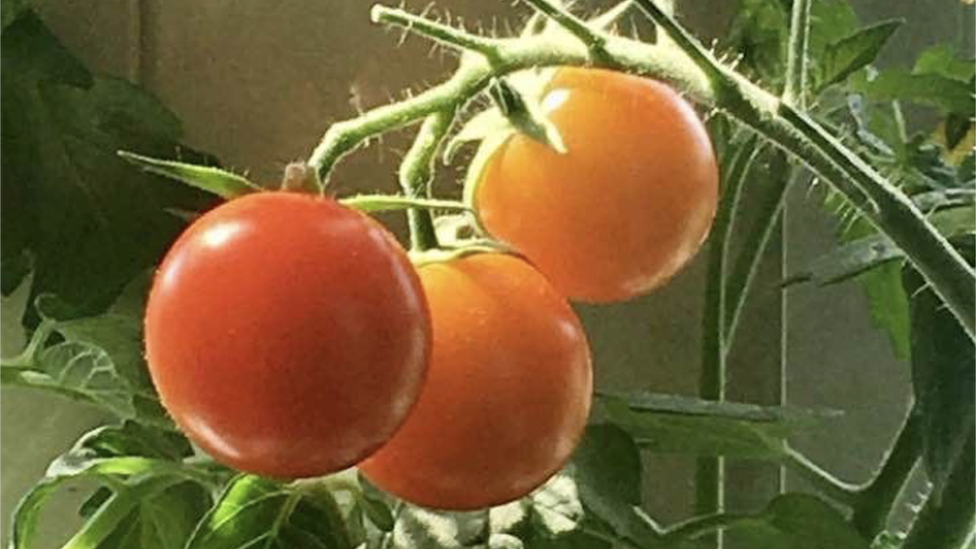
All Colin's indoor tomato plants produced fruit
Mark's advice: Not all tomato plant varieties are enormous. Look for varieties labelled "balcony" or "tumbling" which might be a better fit.
Herbs like basil or thyme would do very well in such a warm location. Chilli plants are a good idea but try a milder variety.
With aphids, he says, it's about managing the population. Smaller plants can be taken outside, turned upside down, tapped a few times and the aphids will jump off. Otherwise, just squish them, he says.
'Edible jungle'
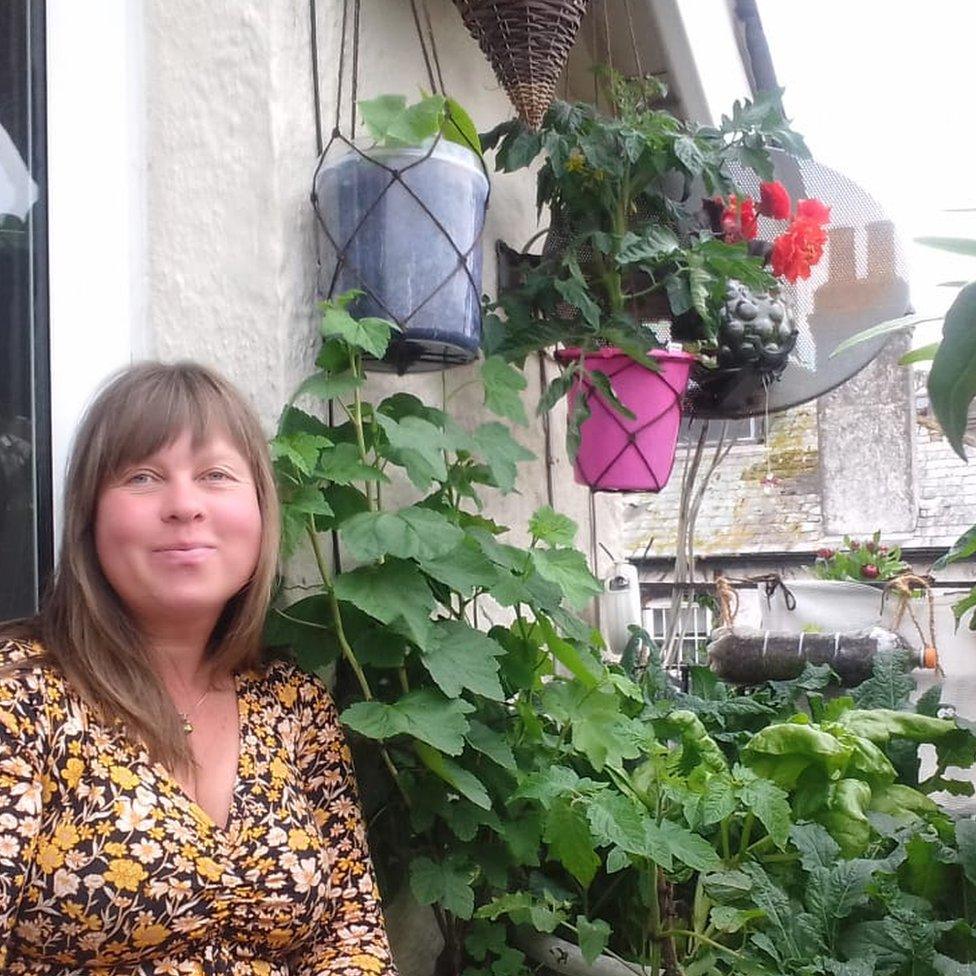
Healthcare worker Hana Evans can see the sea from her balcony flat in Paignton, Devon, and is hoping her lettuce, rocket, kale and spinach will provide fresh greens all winter.
In the summer, she also grew several types of tomato, radishes, peas, beans, cucumbers, herbs and courgettes .
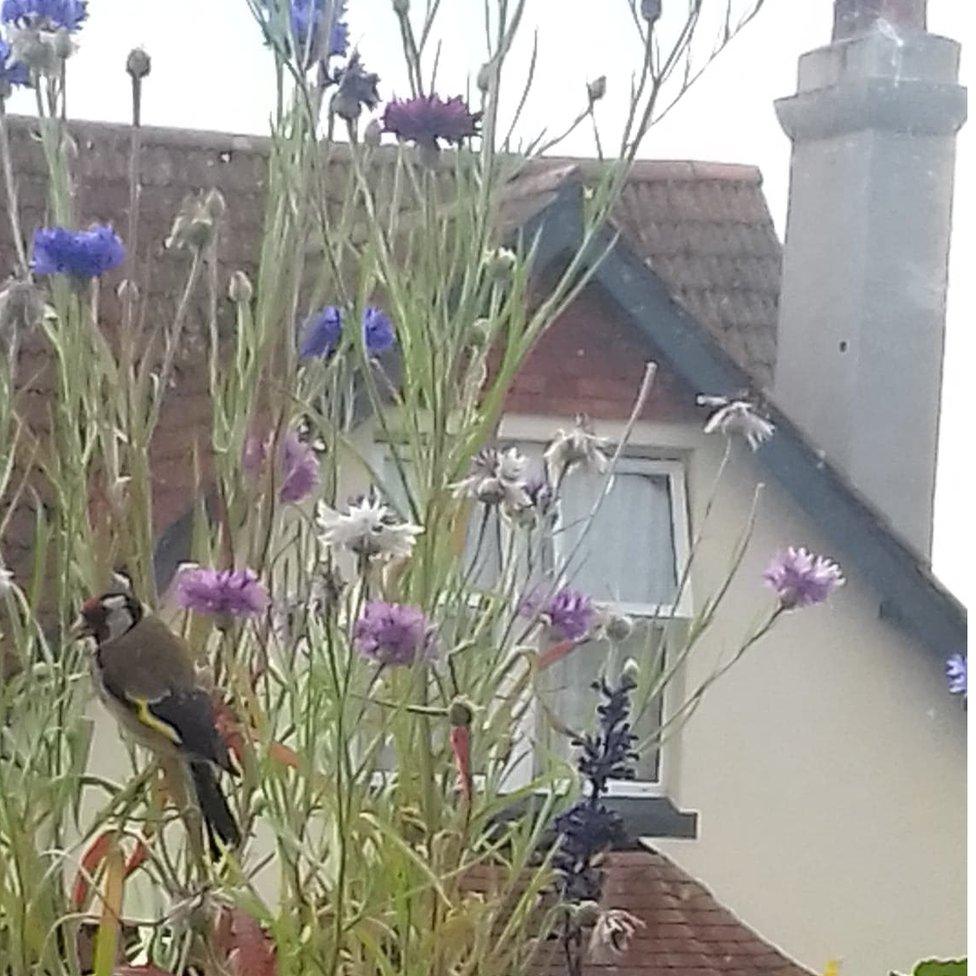
Hana's balcony cornflowers attracted goldfinches
"The plants created a true edible jungle... It's truly been my little retreat and a sanctuary of peace."
Her high-rise garden attracted "bees and butterflies" and "a family of goldfinches" which fed on seeds from the cornflowers she grew.
But packing in so much had a downside: "The plants have been competing for space and light a bit which eventually brought in a few pests," and her courgettes never reached full size although they were "delicious small".
Mark's advice: Plant spacing is partly trial and error and it's definitely worth giving fruiting plants like courgettes a bit more room. "I think she's done an amazing job."
'I don't talk to them'
Richard Chamberlain's four south-west-facing window ledges have seen prolific growth, first with kale and spring onions and then replanted with tomatoes and courgettes which are still "steadily producing".
An experienced gardener who grew up on a fruit and veg farm in Essex, Richard's career as a business consultant has taken him to Florida and California where vegetables "just whoosh".
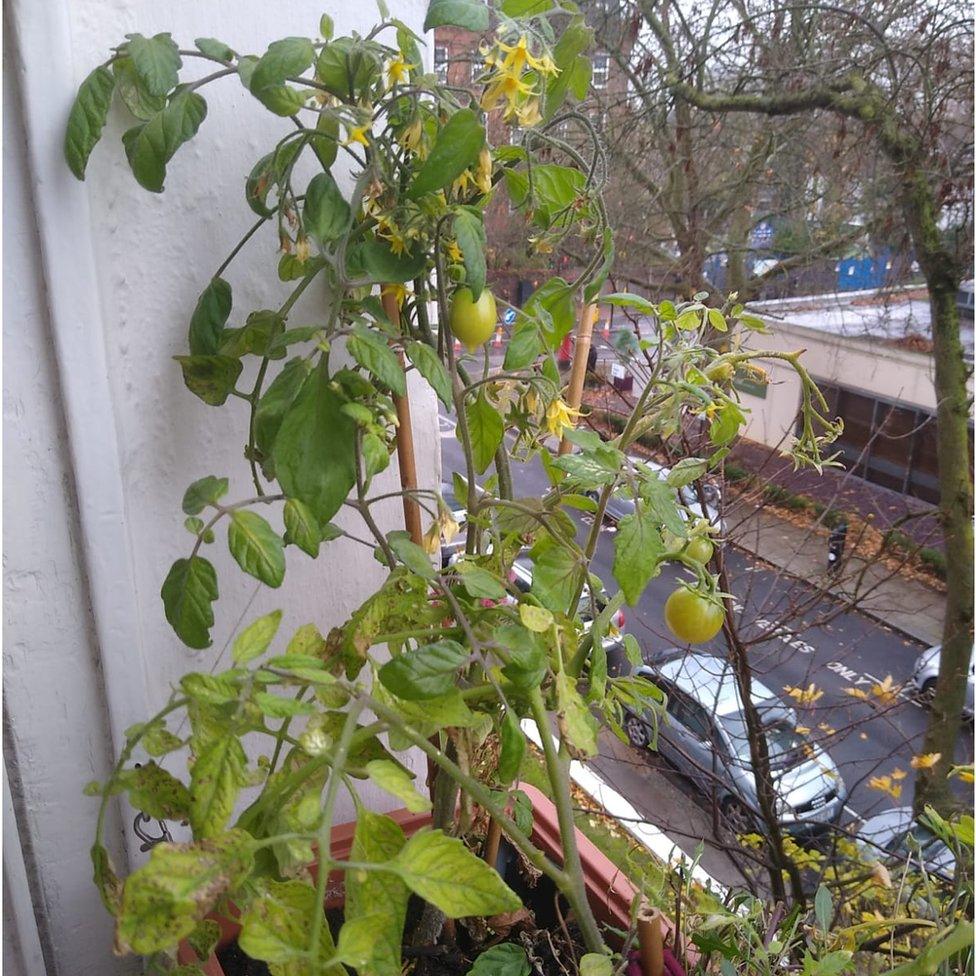
Richard's tomatoes were still producing fruit in November
He checks on the plants at the start of each day but "I don't talk to them," he says.
He would do some things differently next year.
"The kale was OK. There were about eight plants. I made the mistake of not harvesting as soon as I should have done...
"I actually cooked some and tried to eat it but the stalks were too woody in the mouth."
Mark says: Kale varieties like cavalo nero and red Russian can be tender enough to eat uncooked, he says, but plants can become bitter or woody if they dry out. So be extra careful in hot, dry weather, particularly with small pots, which can dry out fast.
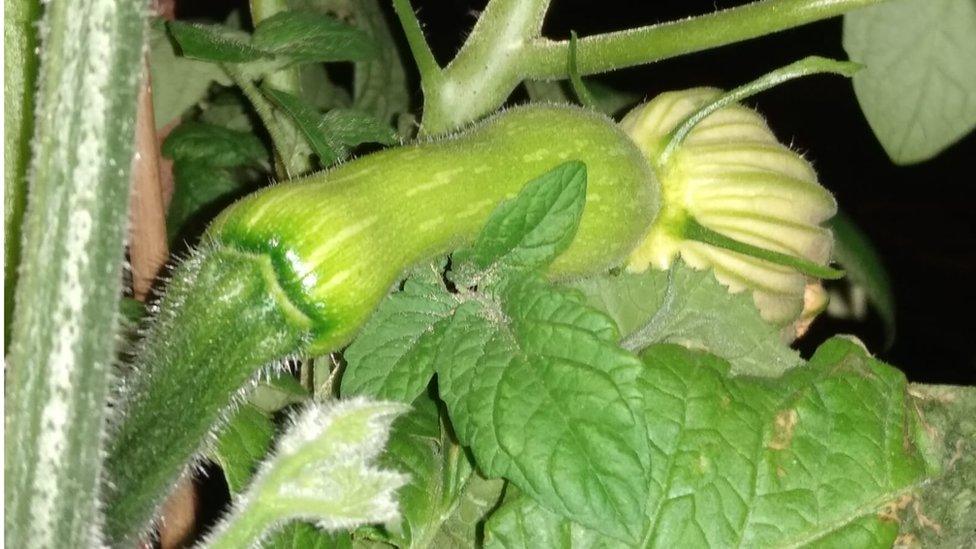
Pallet garden
Robyn Wiles and her partner Alex improvised by using wooden pallets hung on the walls of their patio in Nottingham as planters to grow chillies, peppers, tomatoes, spring onions, and herbs.
The chillies went into stir fries "and have a surprising kick for such little things", while the tomatoes and spring onions "have been lovely in our lunch salads and we made fresh pesto with our basil".
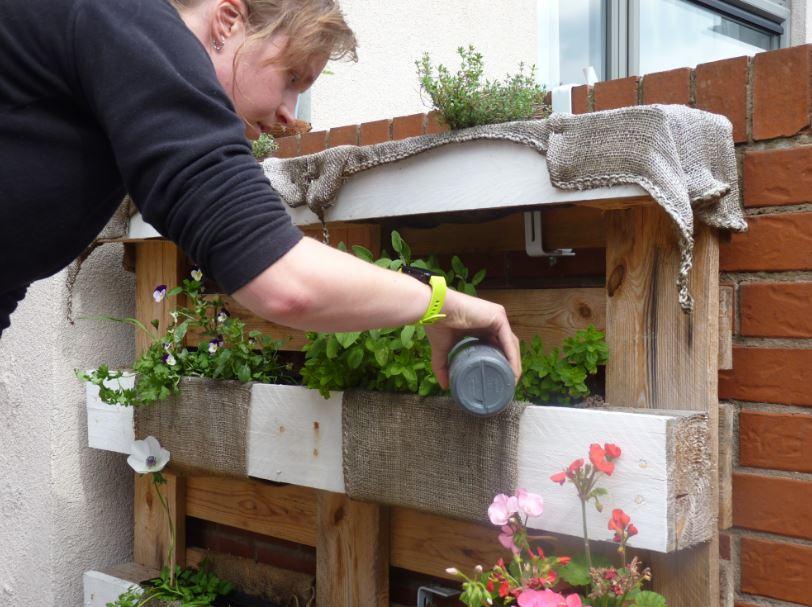
Robyn found the growing space in the pallets a bit restricted
Robyn has less time for gardening now she's back working full-time as a physiotherapist but hopes to try again next year, ideally expanding from pallets into pots for more growing room.
Mark says: If you're short of time, larger containers can be a boon as they retain moisture which means missing a day's watering won't be a disaster.
Also, think about perennial, rather than annual plants. Unlikely perennials for containers include blackberries and blueberries and "you can get a purple raspberry that does well", plus oregano or sage and more unusual herbs like lovage or savory.
Mark even has a container-grown apple tree, which produces about 100 apples each year.
His main advice when things go wrong is not to lose heart and to accept that learning might be slow.
"A little bit of the right information can make all the difference.
"When I started off I had loads of things go wrong, loads of disasters but it's all part of the fun."